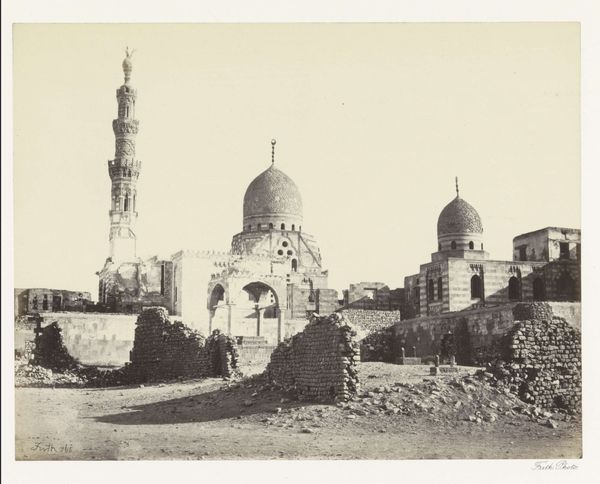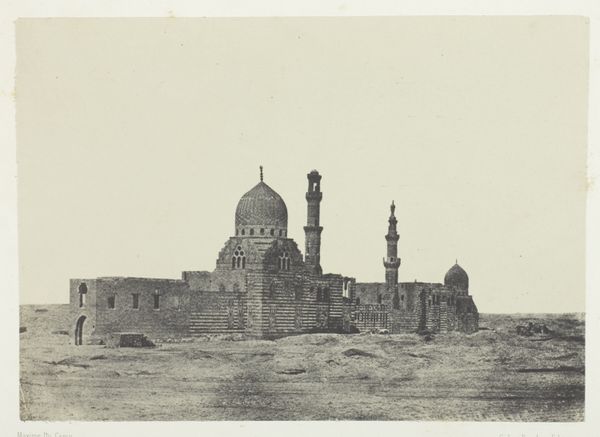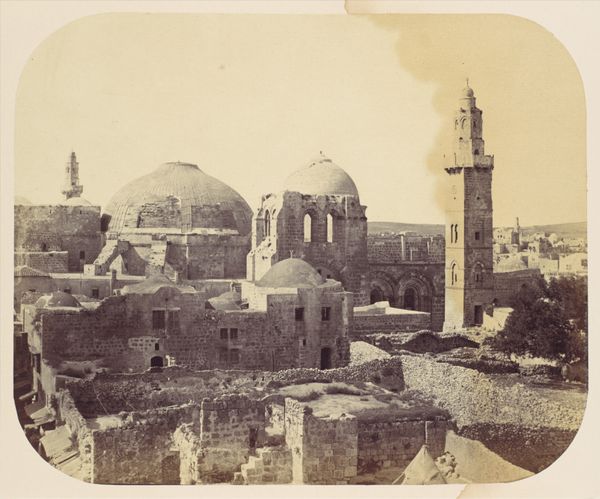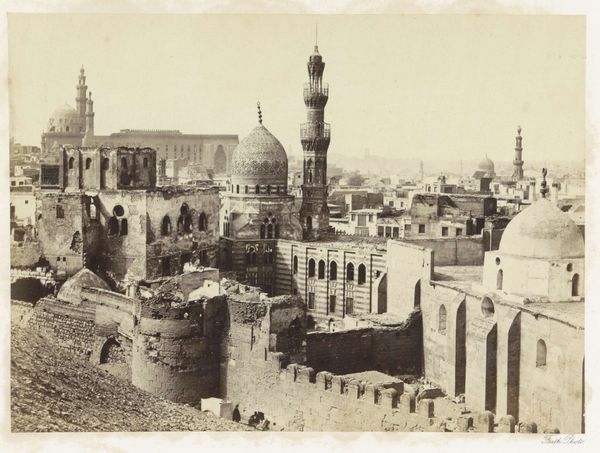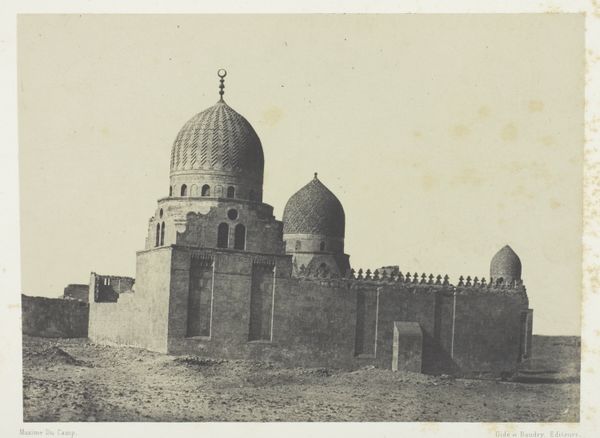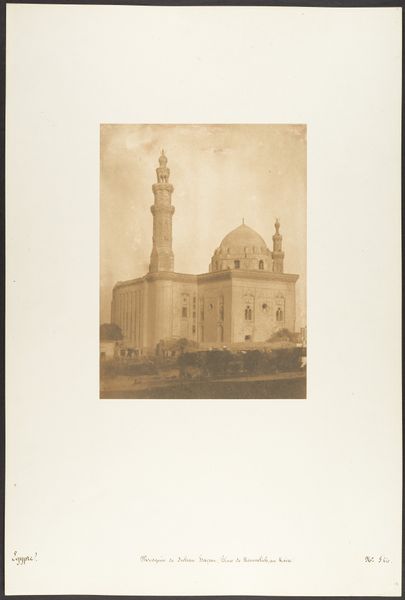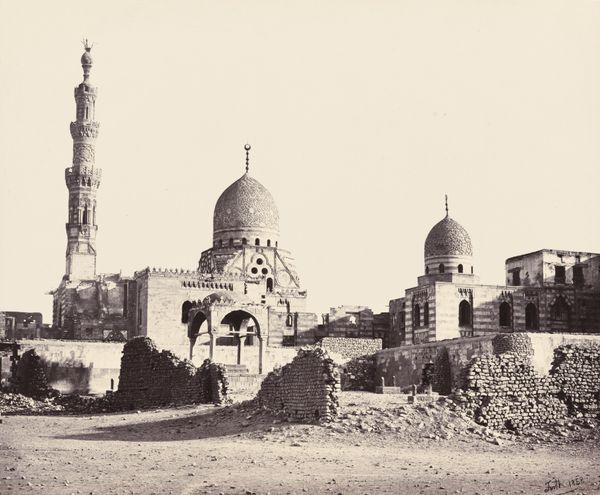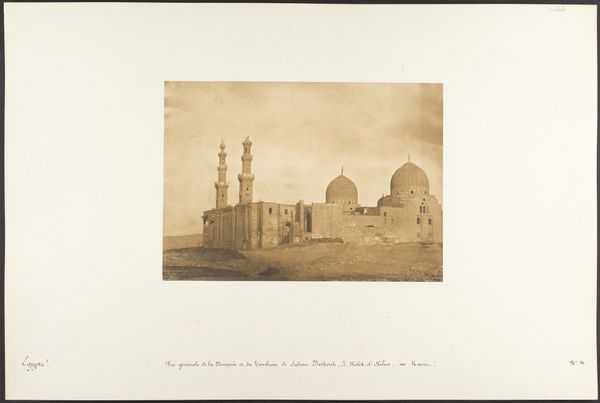
Mausoleum en moskee van sultan al-Ashraf Qaytbay in Caïro 1859 - 1862
0:00
0:00
antoniobeato
Rijksmuseum
photography, albumen-print
#
aged paper
#
toned paper
#
homemade paper
#
landscape
#
photography
#
cityscape
#
islamic-art
#
albumen-print
Dimensions: height 63 mm, width 105 mm
Copyright: Rijks Museum: Open Domain
Editor: This albumen print, titled "Mausoleum en moskee van sultan al-Ashraf Qaytbay in Caïro", was captured between 1859 and 1862 by Antonio Beato. The print on toned paper is so evocative. What jumps out to you as you view it? Curator: I see an image thoroughly embedded in its production. Think of the albumen process itself – the layers of chemistry, the silver nitrate reacting with the sun. Look at how the albumen binds with that "aged," likely handmade paper. This isn’t just a representation of architecture, it’s an index of material and labor in 19th century photography in Egypt, for Western consumption. The photograph highlights not only the beauty of Islamic architecture, but also its consumption through image-making. Does this resonate with you? Editor: Absolutely. I was initially focused on the aesthetic, but it's fascinating to think about the entire material process, and how it impacts the image. What’s the significance, would you say, of using this process to capture the mosque? Curator: Well, the choice of photography, particularly this specific and laborious process, is key. It provided a seemingly objective “truth” of this landscape, appealing to a European audience eager for depictions of the ‘Orient.’ Photography like this helped reinforce certain ideas about the Middle East for a Western consumer. Consider how the albumen print, almost sepia-toned by age, emphasizes the exoticism that Europe expected. We should question whose gaze is reflected through Beato’s work, and what social narratives are reinforced. Editor: That makes so much sense. Thinking about it, I appreciate the work more when considering the layers of production and historical consumption surrounding it. Thanks for this deeper insight! Curator: Precisely! Examining art through its material means provides context and allows us to reflect on the power dynamics behind representation itself.
Comments
No comments
Be the first to comment and join the conversation on the ultimate creative platform.



